- Home
- Video Courses
- Certifications
- AWS Certified Database - Specialty Dumps

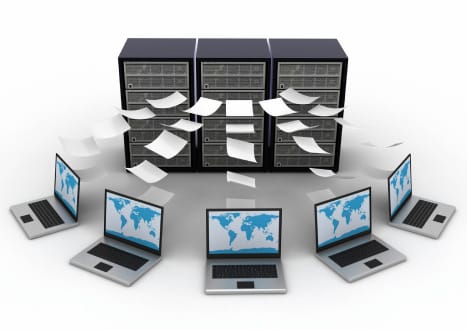
AWS Certified Database - Specialty Certification Video Training Course
AWS Certified Database - Specialty Certification Video Training Course includes 275 Lectures which proven in-depth knowledge on all key concepts of the exam. Pass your exam easily and learn everything you need with our AWS Certified Database - Specialty Certification Training Video Course.
Curriculum for Amazon AWS Certified Database - Specialty Certification Video Training Course



















AWS Certified Database - Specialty Certification Video Training Course Info:
The Complete Course from ExamCollection industry leading experts to help you prepare and provides the full 360 solution for self prep including AWS Certified Database - Specialty Certification Video Training Course, Practice Test Questions and Answers, Study Guide & Exam Dumps.
AWS Certified Database Specialty Training Course
What You'll Learn
Master the complete AWS Database Ecosystem and gain comprehensive understanding of all AWS database services including Amazon RDS, DynamoDB, Aurora, Redshift, ElastiCache, Neptune, DocumentDB, and Timestream. Learn to design scalable database architectures that meet specific business requirements while optimizing for performance, cost, and reliability across different use cases and workload patterns.
Develop advanced skills in Database Design and Architecture by understanding how to select appropriate database technologies for different scenarios, design multi-tier database architectures, implement data modeling best practices, and create robust backup and disaster recovery strategies that ensure business continuity and data protection.
Gain expertise in Database Migration and Deployment strategies including planning and executing seamless migrations from on-premises databases to AWS, implementing Database Migration Service workflows, managing heterogeneous database migrations, and deploying databases using Infrastructure as Code principles with CloudFormation and Terraform.
Master Database Management and Operations including automated backup configurations, performance tuning methodologies, capacity planning strategies, patch management processes, and implementing comprehensive monitoring solutions that provide visibility into database health and performance metrics across your entire database infrastructure.
Excel in Database Security and Compliance by implementing robust access control mechanisms, configuring encryption at rest and in transit, managing database credentials securely using AWS Secrets Manager, implementing network security best practices, and ensuring compliance with industry standards and regulatory requirements.
Develop proficiency in Performance Monitoring and Troubleshooting using CloudWatch metrics, Performance Insights, and other AWS monitoring tools to identify bottlenecks, optimize query performance, troubleshoot connectivity issues, and implement proactive alerting systems that prevent performance degradation.
Prepare thoroughly for the AWS Certified Database Specialty examination with comprehensive practice tests, real-world scenario-based questions, detailed explanations of correct and incorrect answers, and strategic exam-taking techniques that maximize your chances of passing the certification on your first attempt.
Requirements
To successfully complete this AWS Certified Database Specialty training course and maximize your learning experience, you should have a solid foundation in fundamental database concepts and technologies. A basic understanding of relational database management systems including SQL syntax, database design principles, normalization concepts, and transaction management is essential for grasping the more advanced AWS-specific database services and their unique features.
Prior experience with AWS foundational services is highly recommended before attempting this specialty certification. You should be familiar with core AWS services such as EC2 instances for compute resources, VPC networking for secure network isolation, IAM roles and policies for access management, and S3 storage for backup and data archiving. This foundational knowledge will help you understand how AWS database services integrate within the broader AWS ecosystem and how to design comprehensive solutions.
Basic cloud computing knowledge is crucial for understanding the principles behind database as a service offerings, scalability concepts, availability zones, regions, and the shared responsibility model that governs security and compliance in cloud environments. Understanding these concepts will enable you to make informed decisions about database placement, replication strategies, and disaster recovery planning.
Practical experience with at least one major database technology is strongly recommended. Whether you have worked with MySQL, PostgreSQL, Oracle, SQL Server, MongoDB, or other database systems, this hands-on experience will provide valuable context for understanding how AWS managed services compare to traditional database administration tasks and what benefits cloud-native solutions provide.
A desire to learn and commitment to hands-on practice is perhaps the most important requirement. This course involves extensive practical exercises and real-world scenarios that require active participation and experimentation with AWS services. You should be prepared to create AWS accounts, launch database instances, configure security settings, and work through complex migration scenarios.
Technical prerequisites include access to a computer with reliable internet connectivity for accessing the AWS Management Console and completing hands-on exercises. While no specific software installations are required, familiarity with command-line interfaces and basic networking concepts will enhance your learning experience when working with advanced database configurations.
Professional experience in database administration, system administration, or software development roles will provide valuable context for understanding the business implications of different database design decisions. However, motivated beginners with strong foundational knowledge can also succeed with dedicated study and practice.
Financial preparation for AWS usage costs is important since hands-on exercises will involve creating actual AWS resources. While the course is designed to minimize costs through the use of AWS Free Tier services where possible, some exercises may incur small charges. Students should budget approximately fifty to one hundred dollars for hands-on practice throughout the course duration.
Time commitment expectations should be realistic, as this comprehensive specialty certification requires significant study time. Students should plan to dedicate at least ten to fifteen hours per week for course materials, hands-on practice, and additional reading to fully master the concepts covered in this training program.
Description
The AWS Certified Database Specialty certification represents one of the most prestigious and technically demanding certifications in the AWS ecosystem, validating your expertise in designing, managing, and optimizing database solutions on the Amazon Web Services platform. This comprehensive training course provides everything you need to master all aspects of AWS database services and pass the challenging examination with confidence.
Amazon Web Services has revolutionized how organizations approach database infrastructure, offering a comprehensive suite of managed database services that eliminate the complexity of traditional database administration while providing unprecedented scalability, reliability, and performance. This course takes you on a journey through the entire AWS database ecosystem, from foundational concepts to advanced architectural patterns that power some of the world's largest applications.
The course begins with an intensive exploration of the AWS database landscape, covering the full spectrum of available services including relational databases like Amazon RDS and Aurora, NoSQL solutions such as DynamoDB and DocumentDB, specialized databases like Neptune for graph data and Timestream for time-series data, and analytical databases including Redshift and Athena. You will understand the unique strengths and ideal use cases for each service, enabling you to make informed decisions about which database technology best fits specific business requirements.
Database design and architecture form the cornerstone of successful AWS database implementations. This course provides deep insights into designing scalable, resilient database architectures that can handle massive workloads while maintaining high availability and disaster recovery capabilities. You will learn advanced concepts including multi-region deployments, read replica configurations, partitioning strategies, and connection pooling techniques that optimize performance and cost efficiency.
Migration strategies receive extensive coverage as organizations worldwide transition from legacy on-premises systems to cloud-native database solutions. The course covers comprehensive migration planning methodologies, including assessment techniques for existing database workloads, compatibility analysis, performance benchmarking, and risk mitigation strategies. You will master the Database Migration Service, Schema Conversion Tool, and other AWS migration utilities through hands-on exercises that simulate real-world migration scenarios.
Performance optimization is a critical skill covered throughout the course, with detailed exploration of monitoring tools, performance tuning methodologies, and troubleshooting techniques. You will learn to use CloudWatch metrics, Performance Insights, and other monitoring solutions to identify bottlenecks, optimize query performance, and implement proactive alerting systems that prevent performance degradation before it impacts users.
Security considerations permeate every aspect of AWS database management, and this course provides comprehensive coverage of database security best practices. Topics include implementing robust access control mechanisms, configuring encryption at rest and in transit, managing database credentials securely, implementing network security controls, and ensuring compliance with regulatory requirements such as GDPR, HIPAA, and SOX.
The course structure emphasizes practical, hands-on learning through real-world scenarios and projects that mirror the challenges you will encounter in production environments. Each module includes comprehensive labs where you will configure database instances, implement security controls, perform migrations, optimize performance, and troubleshoot common issues. These practical exercises ensure that you develop not just theoretical knowledge but also the practical skills needed to succeed in database administration roles.
Exam preparation is integrated throughout the course with practice questions, scenario-based exercises, and detailed explanations that help you understand not just the correct answers but also the reasoning behind AWS best practices. The course includes comprehensive practice tests that simulate the actual certification exam experience, complete with the same question formats, difficulty levels, and time constraints you will encounter during the real examination.
Industry best practices and real-world case studies provide valuable context for understanding how AWS database services are implemented in production environments across different industries and use cases. You will study successful implementations, learn from common mistakes, and understand the decision-making processes that lead to optimal database architectures.
The course content is regularly updated to reflect the latest AWS service updates, new features, and evolving best practices in cloud database management. This ensures that your knowledge remains current and relevant in the rapidly evolving cloud computing landscape where new capabilities and services are constantly being introduced.
Advanced topics include database automation using AWS Lambda and CloudFormation, implementing event-driven architectures with database triggers, integrating databases with other AWS services for comprehensive solutions, and designing cost optimization strategies that balance performance requirements with budget constraints.
Troubleshooting methodologies receive detailed attention with systematic approaches to diagnosing and resolving common database issues including connection problems, performance bottlenecks, replication lag, backup failures, and security incidents. You will develop the analytical skills needed to quickly identify root causes and implement effective solutions.
The learning experience is enhanced through multiple delivery methods including video lectures, written materials, hands-on labs, interactive demos, and community discussions. This multi-modal approach accommodates different learning styles and ensures that complex concepts are thoroughly understood from multiple perspectives.
Upon completing this course, you will possess the comprehensive knowledge and practical skills needed to design, implement, and manage sophisticated database solutions on AWS. You will be prepared not only to pass the AWS Certified Database Specialty examination but also to excel in database administration, cloud architecture, and data engineering roles that require deep expertise in AWS database technologies.
Who This Course Is For
This comprehensive AWS Certified Database Specialty training course is specifically designed for database administrators seeking to advance their careers by mastering cloud-native database technologies and earning one of the most prestigious AWS specialty certifications available in the market today.
Cloud architects and solutions architects will find tremendous value in this course as it provides the deep database expertise needed to design comprehensive cloud solutions that incorporate best-in-class database architectures, ensuring optimal performance, security, and cost-effectiveness for complex enterprise applications and workloads.
Data engineers and data scientists who work with large datasets and require robust, scalable database infrastructure will benefit from understanding AWS database services that can handle massive data volumes, provide real-time analytics capabilities, and integrate seamlessly with machine learning and data processing workflows.
DevOps engineers and system administrators responsible for managing database infrastructure in cloud environments will gain essential skills for automating database operations, implementing infrastructure as code, and maintaining high availability database systems that meet stringent business requirements.
Software developers and application architects building cloud-native applications need comprehensive understanding of AWS database options to make informed decisions about data persistence, caching strategies, and application architecture patterns that leverage managed database services for optimal performance and scalability.
IT professionals transitioning from traditional on-premises database environments to cloud-based solutions will find this course invaluable for understanding the differences, advantages, and best practices associated with managed database services versus traditional database administration approaches.
Course Overview
This AWS Certified Database Specialty training course represents the most comprehensive preparation available for the certification examination, covering every aspect of AWS database services through a carefully structured curriculum that balances theoretical knowledge with practical, hands-on experience. The course is meticulously designed to guide you through the complex landscape of AWS database technologies while preparing you thoroughly for one of the most challenging AWS specialty certifications.
The curriculum begins with foundational concepts that establish a solid understanding of cloud database principles, AWS global infrastructure, and the shared responsibility model that governs database security and management in the cloud. This foundation ensures that all students, regardless of their background, develop a comprehensive understanding of how AWS database services fit within the broader cloud computing ecosystem.
Core AWS database services receive extensive coverage through dedicated modules that explore Amazon RDS in all its variants including MySQL, PostgreSQL, Oracle, and SQL Server implementations. Aurora receives special attention due to its unique architecture and performance characteristics, with detailed exploration of Aurora MySQL and Aurora PostgreSQL, clustering configurations, and advanced features like Aurora Serverless and Global Databases.
NoSQL database services including DynamoDB, DocumentDB, and Neptune are thoroughly examined through practical exercises that demonstrate their unique capabilities and ideal use cases. Students learn to design effective data models, implement efficient access patterns, and optimize performance for different types of applications and workloads.
Specialized database services such as Amazon Redshift for data warehousing, ElastiCache for in-memory caching, and Amazon Timestream for time-series data receive comprehensive treatment with real-world implementation scenarios that demonstrate their practical applications in enterprise environments.
Database migration strategies form a substantial portion of the curriculum, with extensive coverage of the Database Migration Service, Schema Conversion Tool, and various migration patterns including homogeneous and heterogeneous migrations, continuous replication, and zero-downtime migration techniques.
Performance optimization receives dedicated attention through modules covering monitoring strategies, performance tuning methodologies, capacity planning techniques, and troubleshooting approaches that enable students to maintain optimal database performance in production environments.
Security implementations are thoroughly explored through practical exercises covering encryption configurations, access control mechanisms, network security controls, and compliance requirements that ensure database deployments meet the highest security standards.
The course incorporates multiple assessment methods including quizzes after each major section, comprehensive practice tests that simulate the actual certification exam, and hands-on projects that require students to implement complete database solutions from requirements gathering through deployment and optimization.
Real-world case studies provide valuable insights into how AWS database services are successfully implemented across different industries, including examples from financial services, healthcare, e-commerce, and media companies that demonstrate best practices and lessons learned from production deployments.
Advanced topics include database automation using Infrastructure as Code, event-driven architectures with database triggers, integration patterns with other AWS services, and cost optimization strategies that help organizations maximize the value of their database investments while minimizing operational expenses.
Course Benefits
Completing this AWS Certified Database Specialty training course provides immediate career advancement opportunities as organizations worldwide increasingly migrate their database workloads to AWS and desperately need qualified professionals who can design, implement, and manage cloud-native database solutions. The certification demonstrates your expertise in one of the most critical areas of cloud computing and positions you for senior database administration, cloud architecture, and data engineering roles that command premium salaries.
Professional credibility receives a significant boost as the AWS Certified Database Specialty certification is widely recognized as one of the most technically demanding and valuable certifications in the cloud computing industry. This certification validates your deep expertise in AWS database technologies and demonstrates your commitment to staying current with rapidly evolving cloud database technologies and best practices.
Technical skills development encompasses the full spectrum of AWS database services, providing you with comprehensive knowledge that extends far beyond basic database administration. You will master advanced concepts including multi-region database deployments, automated backup and recovery strategies, performance optimization techniques, security implementation best practices, and cost optimization methodologies that are essential for managing enterprise-scale database infrastructure.
Hands-on experience with cutting-edge database technologies gives you practical expertise that directly applies to real-world projects and challenges. The course provides extensive laboratory exercises where you configure actual AWS database instances, implement security controls, perform migrations, and optimize performance using the same tools and techniques used in production environments by leading organizations.
Networking opportunities expand significantly as AWS certified professionals join an elite community of cloud experts who collaborate, share knowledge, and support each other's career growth. The certification opens doors to professional networks, user groups, and industry events where you can connect with other database professionals and potential employers who value certified expertise.
Problem-solving capabilities develop through exposure to complex database scenarios and troubleshooting methodologies that prepare you to handle the challenging situations encountered in production database environments. You will learn systematic approaches to diagnosing performance issues, resolving security incidents, and implementing solutions that prevent future problems.
Industry recognition increases as the AWS Certified Database Specialty certification is specifically sought after by employers who need professionals capable of managing mission-critical database workloads in cloud environments. Many organizations require this certification for senior database roles, making it an essential credential for career advancement in cloud computing.
Salary potential improves significantly as AWS certified database specialists command higher compensation due to the specialized nature of their skills and the high demand for qualified professionals. Industry surveys consistently show that AWS certified professionals earn substantially more than their non-certified counterparts, with database specialists being among the highest-paid AWS professionals.
Future-proofing your career becomes possible as cloud adoption continues accelerating and organizations increasingly rely on managed database services for their critical applications. The skills and knowledge gained through this course remain relevant and valuable as AWS continues expanding their database service offerings and capabilities.
Confidence building occurs through comprehensive exam preparation that includes practice tests, detailed explanations, and strategic exam-taking techniques. Students complete the course feeling fully prepared to pass the challenging examination and confident in their ability to apply their knowledge in real-world professional situations where database expertise is critical for business success.
Instructor
I hope this message finds you well. My name is [Your Name], and I am writing to express my interest in the AWS Certified Database - Specialty () training course that you are offering. I am currently in the process of expanding my expertise in cloud technologies, and after researching various AWS certifications, I have identified the Database Specialty certification as one of the most valuable credentials to further my knowledge and career in cloud database management and architecture.
I have a foundational understanding of AWS services and have already earned my AWS Certified Solutions Architect – Associate certification. Through that journey, I gained experience with services like Amazon RDS, DynamoDB, S3, and basic networking and security practices within AWS. However, I now wish to deepen my knowledge specifically in the database domain and better understand the various AWS database offerings, their optimal use cases, migration strategies, design patterns, monitoring, and automation.
I am particularly interested in your training course because I am seeking structured, in-depth guidance from an experienced professional. From what I understand, the AWS Certified Database - Specialty exam covers a wide range of advanced topics, including:
Workload-specific database design and selection
Deployment, migration, and management strategies
Monitoring, troubleshooting, and performance tuning
Security and compliance
High availability and disaster recovery
Automation and DevOps integration
Given the scope of the exam and the real-world knowledge required, I believe that having an instructor-led training program will be invaluable not only to help me pass the certification exam, but also to build the practical skills needed to succeed in a real-world AWS environment.
Could you please provide more information about your training course? Specifically, I would like to know the following:
The structure and duration of the course
Whether it is self-paced, live instructor-led, or a combination
What topics and services are covered in depth
What hands-on labs or real-world examples are included
Whether any practice exams, quizzes, or assessments are provided
The level of prior experience or certifications expected from students
The total cost and any available enrollment dates or deadlines
I am a motivated and committed learner, and I would be grateful for the opportunity to join your course. In addition to preparing for the exam, I am also looking to apply this knowledge to a role involving cloud database architecture, so I would truly value any insights, tips, or best practices you could share throughout the training.
Thank you for taking the time to read my message. I appreciate your consideration, and I look forward to hearing from you soon. Please let me know if there are any prerequisites I should complete before beginning the course or if there is a recommended path to follow alongside this training.
Student Feedback
Similar Amazon Video Courses
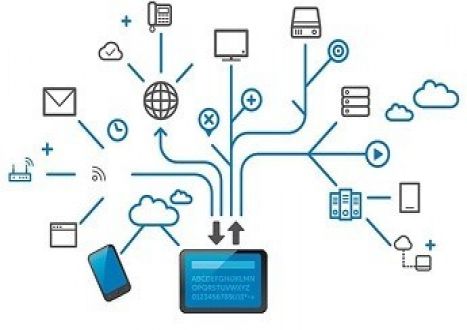


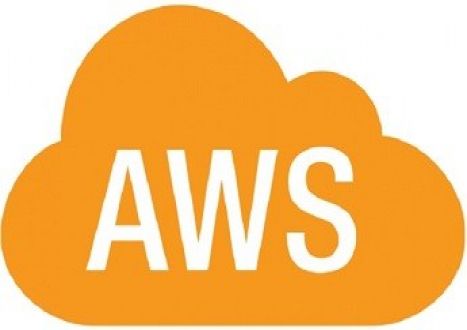

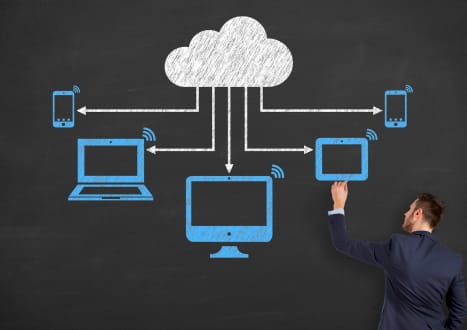


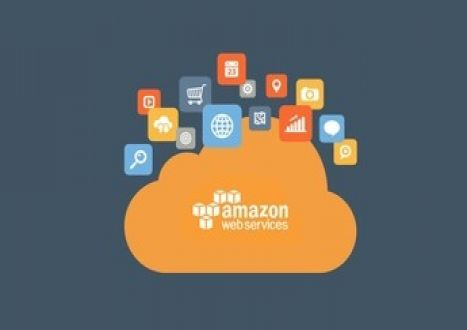




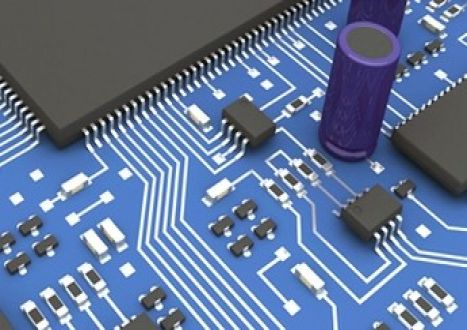


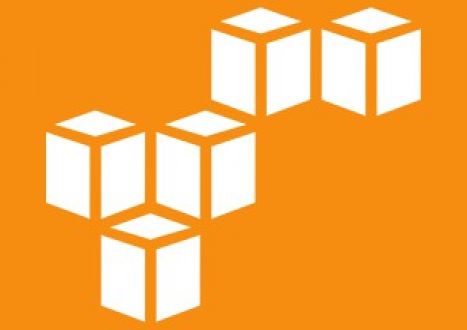

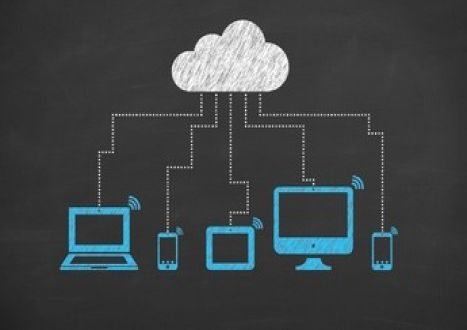

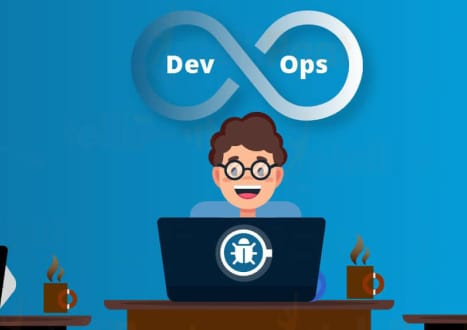


















Only Registered Members Can Download VCE Files or View Training Courses
Please fill out your email address below in order to Download VCE files or view Training Courses. Registration is Free and Easy - you simply need to provide an email address.
- Trusted By 1.2M IT Certification Candidates Every Month
- VCE Files Simulate Real Exam Environment
- Instant Download After Registration.
Log into your ExamCollection Account
Please Log In to download VCE file or view Training Course
Only registered Examcollection.com members can download vce files or view training courses.




